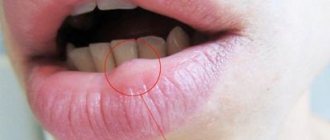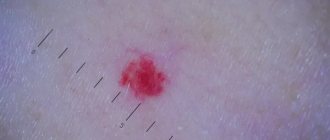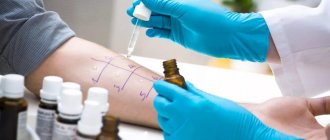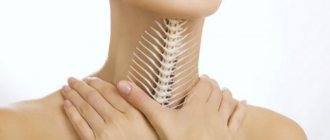Essential tremor is a fairly common hereditary disease of the central nervous system that can occur in children, but mainly develops in older people. The only manifestation of this disease is trembling. Tremors with essential tremor have different localization, severity, prevalence, characteristics and age of onset. Tremors of the head, hands, and tongue are most often observed. Lip tremor is slightly less common in adults.
Symptoms
Most often, essential tremor manifests itself as medium-amplitude and small tremors of the hands, alternating contractions of the flexor and extensor muscles, while muscle tone remains the same. Trembling becomes noticeable during purposeful movements; when approaching the target, its persistence or even a slight increase is observed. Rest tremor is much less common.
As the disease progresses, patients become unable to work. They become unable to serve themselves: due to difficulties in holding cutlery, they cannot eat food or drink water from a mug. Patients are unable to perform many activities that are necessary in everyday life; they need help even with buttoning up buttons and other trivial matters.
Due to the layering of emotional disturbances on the manifestations of tremor, patients develop social maladjustment. Hand tremors with essential tremor occur earlier than, for example, trembling of the lip (in adults) and other parts of the body. For a long time, hand tremors remain the only manifestation of the disease. As a rule, simultaneous trembling of both hands is observed, in rare cases - first only one, then the other.
Diagnostics
Determining the cause of numbness is the responsibility of a neurologist. Due to the possible connection between upper lip sensitivity disorders and dental pathologies, a dentist is often involved in the examination. Sometimes a consultation with an allergist or endocrinologist is required. The diagnostic program includes the following methods:
- General inspection
. The doctor evaluates the patient’s appearance and the condition of the tissue at the site of the lesion. Identifies signs of inflammation, traumatic injury, skin rashes, and other symptoms indicating the cause of numbness. - Dental examination
. Provides for the study of teeth and soft tissues of the oral cavity to detect caries, pulpitis, gingivitis, periodontitis, and other dental diseases. - Neurological examination
. Includes sensory and movement testing. The specialist asks the patient to close his eyes, stretch out his lips, bare his teeth, and stick out his tongue. Tests reflexes and muscle strength of the limbs. - X-ray of the tooth.
Informative for dental diseases, allows you to detect inflammatory processes, osteomyelitis, tumor lesions. According to indications, it is supplemented with other hardware diagnostic methods. - Tomographic techniques.
Effective for multiple sclerosis, stroke and cerebral circulation disorders. They help determine the location, volume and nature of the lesion, and choose the optimal treatment tactics. - Lab tests
. Necessary to confirm pernicious anemia, hypoglycemia in diabetes mellitus. To clarify the type of allergen that caused the development of Quincke's edema, allergy tests are performed.
Electroneuromyography
Various localizations
More than 50% of patients suffer from head tremors. Often, it is from this localization that the disease begins, and later trembling of the limbs occurs. The head most often moves left and right, less often - down and up, in a circle or diagonally.
Quite often, patients suffer from facial muscles - trembling of the lower lip develops in adults when smiling or talking. Tremor can also manifest itself as isolated, rapid, small twitches of the facial muscles. This type of tremor can occur at an early stage of the disease.
In addition, patients may experience mild tremor of the tongue or eyelids.
Elderly and middle-aged patients who have had the disease for more than 10 years may experience a trembling voice. Sometimes this symptom also occurs in younger people (up to 20 years old) with a disease duration not exceeding 5 years.
Almost a quarter of patients experience trembling of the lower extremities.
Trembling of the entire body is observed in rare cases, most often after physical exertion or emotional outbursts. This symptom may indicate the spread of the disease.
In a small number of patients, diaphragmatic trembling is observed, which can be confirmed by x-ray. When a combination of tremor of the tongue, lips, diaphragm and vocal cords occurs, speech and breathing rhythm may be disrupted.
Regardless of location, trembling intensifies with excitement, significant physical exertion, and hypothermia. When drinking alcohol, there is a decrease in tremor, but it intensifies the next day.
There is a childhood and youthful form of tremor, as well as a form of mature and senile age.
The disease is often diagnosed in patients of childhood and adolescence.
Essential tremor is benign: it does not pose a threat to the patient’s life, but it is constantly progressing, so this disease cannot be ignored.
Doctors at the Neurology Clinic of the Yusupov Hospital provide assistance to patients with essential tremor, aimed at eliminating symptoms that significantly worsen the quality of life of patients. The clinic provides high-quality drug therapy and physiotherapeutic procedures that significantly improve the patient’s condition.
Which doctor should I contact?
To undergo the examination, make an appointment with a therapist, who will issue a referral to a neurologist - a doctor who treats neurological disorders.
To establish a diagnosis, consultation may be required:
- cardiologist;
- endocrinologist;
- dentist;
- immunologist;
- toxicologist.
Treatment
Patients with mild manifestations of essential tremor do not need drug treatment. To eliminate tremors of one or another part of the body, they just need to give up caffeine-containing drinks (coffee, tea), eliminate alcohol and smoking, increase physical activity, time spent in the fresh air and avoid stress.
In case of severe essential tremor, drug treatment is prescribed. Timely initiation of therapy improves its effectiveness.
Causes of glossalgia and stomalgia
The development of the condition is influenced by local and general factors. Local ones include:
- Damage to the mucous membrane due to low-quality dentures, abundant deposits of tartar, and sharp chips on the teeth.
- Burning of the tongue and palate with the development of galvanosis caused by the presence of dentures made of different metals in the dentition.
- Development of allergies to plastic prostheses.
- Trauma to the oral cavity during orthopedic procedures.
These factors do not always cause glossalgia, so they cannot be unambiguously called the causes of the disease, and in the treatment of burning tongue, their elimination is only part of a set of procedures.
Common factors include:
- Diseases of the nervous system of any nature.
- Gastrointestinal pathologies.
- Endocrine diseases.
- Menopause.
- Diseases of the cardiovascular system and vascular disorders.
- Advanced syphilis or neurosyphilis.
- Encephalitis.
The development of common diseases almost always leads to disruption of the nervous system, which, in turn, provokes the occurrence of glossalgia. The “trigger” can be severe stress, serious nervous overload, or physical fatigue.
What to do if your lips go numb?
The treatment regimen depends on the cause that provoked paresthesia.
Recovery requires a comprehensive approach, including:
- taking medications;
- quitting smoking and alcoholic beverages;
- physiotherapy.
It is important to balance the diet, introduce foods rich in vitamins and minerals, and maintain a drinking regime, drinking at least 1.5 liters of water per day. Traditional methods are allowed as an auxiliary treatment.
Treatment with drugs
For diseases leading to numbness of the face and lips, different groups of drugs are prescribed.
| Group of drugs | Name | Action |
| Diuretics. | Lasix, Spironolactone, Bumetanide. | They relieve swelling, help regulate blood pressure, and help remove salt from the body. |
| Non-steroidal anti-inflammatory tablets. | Nurofen, Ibuprofen. | Reduce the inflammatory process, reduce the intensity of headaches. |
| Glucocorticosteroids. | Dexamethasone, Prednisolone. | They improve the conduction of nerve impulses and have antiallergic and immunosuppressive effects. |
| Antispasmodics. | Trental, Diprofen, Spasmalgon. | Relaxes vascular walls, improves blood circulation. |
| Nootropic drugs. | Piracetam, Nootropil. | They enhance metabolic processes in nerve cells and restore cerebral circulation. |
| Vitamin preparations. | Cyanocobalamin, Pyridoxine hydrochloride, Thiamine bromide. | Stimulate metabolism, prevent a lack of B vitamins, and normalize the functioning of the peripheral nervous system. |
| Vasodilator tablets | Vazonite. | Reduces viscosity, improves blood circulation, and ensures oxygen supply to tissues. |
Folk remedies for loss of sensitivity
- Take 1 tbsp. l. medicinal clover. Pour 500 ml of boiling water and let it brew for 20 minutes. Pass through a filter, divide into 3 doses and drink before meals. To prepare an infusion according to the same recipe, you can use geranium leaves, stinging nettle, and St. John's wort. Repeat treatment for 7 days.
- Dissolve 1 tsp in 200 ml of warm water. baking soda and add 4 drops of iodine. Stir, soak gauze in the product, fold it 3 times and apply to your lips for 30 minutes. Apply the lotions daily in the evening until the symptoms go away.
- Measure out 1 tsp. oak bark and chamomile. Brew the raw material in 200 ml of boiling water. After 15 minutes, strain and use for lotions 2 times a day.
- Peel the garlic cloves, chop and fill a 250 ml jar. Fill with vodka, seal with a plastic lid and place in a closet for a week. Shake contents regularly. Filter and take 5 drops 3 times a day, dissolving the tincture in 50 ml of water.
- Peel the pumpkin, cut into pieces, cover with water and simmer until tender. Drain the liquid, cool the vegetable slightly and blend with a blender. Apply warm to numb lips in the evenings for 20 minutes.
Physiotherapy for paresthesia
Physiotherapy is recommended to improve the passage of nerve impulses and blood circulation. The procedures activate metabolic processes, eliminate swelling and inflammation.
In the rehabilitation therapy of stroke, neuritis of the facial nerve, osteochondrosis of the cervical spine, the following are used:
- UHF to reduce swelling;
- electrophoresis with nicotinic acid, which dilates blood vessels;
- acupuncture to stimulate nerve endings;
- magnetic therapy to restore blood circulation;
- ultraphonophoresis with Proserin and Hydrocortisone.
Paraffin therapy helps a lot. Heated paraffin transfers heat deep into the tissues, dilates blood vessels and normalizes blood circulation. During the procedure, lips are lubricated with Vaseline. Heat the paraffin in a water bath to 60 degrees. Apply the product to the lips with a brush, cover with a napkin and apply several more layers. Insulate with polyethylene, cloth and leave for 30 minutes. Carefully remove the cooled paraffin and moisturize your lips with cream. For the procedure to provide a noticeable result, you need to undergo at least 10 sessions, which are done every other day.
Summary table of conditions manifested by numbness of the lips and tongue
| Headache | Other sensory disorders | Changes in blood test | Additional research methods | |
| Migraine with aura | One hour after numbness | Numb hands | Usually absent | Triptan use with outcome monitoring |
| Stroke | Often preceded by numbness, intense and prolonged | Sensation in half of the body is often impaired | Changes in coagulation system parameters. There may be an increase in platelet count | CT, MRI |
| Bell's palsy | Usually absent | Sensitivity in half of the face is often impaired | Rarely – appearance of inflammatory markers | CT, MRI |
| Hypoglycemia | Usually absent | Diabetic polyneuropathy | A decrease in blood glucose levels below 3 mmol/l. | CT and MRI to exclude insulinoma |
| Anemia (with B-12 deficiency) | Usually absent | Peripheral polyneuropathy | Decrease in the number of red blood cells, hemoglobin, sometimes leukopenia and thrombopenia. | Bone marrow puncture |
| Anxiety disorders | Usually absent. Dizziness is typical. | Short-term disturbances in the sensitivity of different parts of the body may occur; there is a connection with experiences and stressful situations | Usually absent | Consultation with a psychotherapist, tests to determine anxiety and depression |
| Angioedema | Usually absent. With extensive swelling, there may be discomfort in the head area. | Sensitivity is impaired in the area of edema | Markers of inflammation may appear | For allergic edema - tests with allergens, for hereditary edema - testing for defects in the complement system |
| Malignant and benign neoplasms | Local pain in the area of the tumor or diffuse pain due to the meningeal membrane involved. Doesn't respond well to painkillers. | Often, but not with all tumors | With a malignant process - a decrease in all blood parameters, with a benign process - usually no changes | CT, MRI of the head, neck, brain |
Symptoms
There are clinical signs that in all cases, regardless of why the lips become numb, will complement the main manifestation. These include:
- feeling of coldness on the lips;
- burning and itching on the lower or upper lip;
- spread of numbness to the cheeks, nose and chin;
- pathological redness of the affected segment;
- sensation of “goosebumps” on the lips;
- tingling and pain of varying severity.
Depending on what was the source of the disturbance or complete absence of lip sensitivity, the symptoms can be supplemented by a huge number of signs. Their main category is expressed in:
- headaches, including migraines;
- burning in the occipital region, neck and area between the shoulder blades;
- decreased hearing and visual acuity;
- lack of coordination;
- dizziness;
- convulsive seizures;
- drooping of one side of the face, often on the left;
- irradiation of numbness to the arms and legs, back and chest;
- severe itching of the skin;
- cold feet;
- increased lacrimation;
- coughing and sneezing;
- bleeding gums and toothache;
- heartburn and bad breath;
- increased body temperature;
- fluctuations in heart rate and blood pressure;
- pain syndrome of various localizations.
It is very important to consider that all of the above symptoms, in addition to numbness of the lips, are not the entire range of clinical manifestations. In each specific case, each patient’s symptoms will be purely individual, but in any situation it is necessary to seek help from a neurologist








